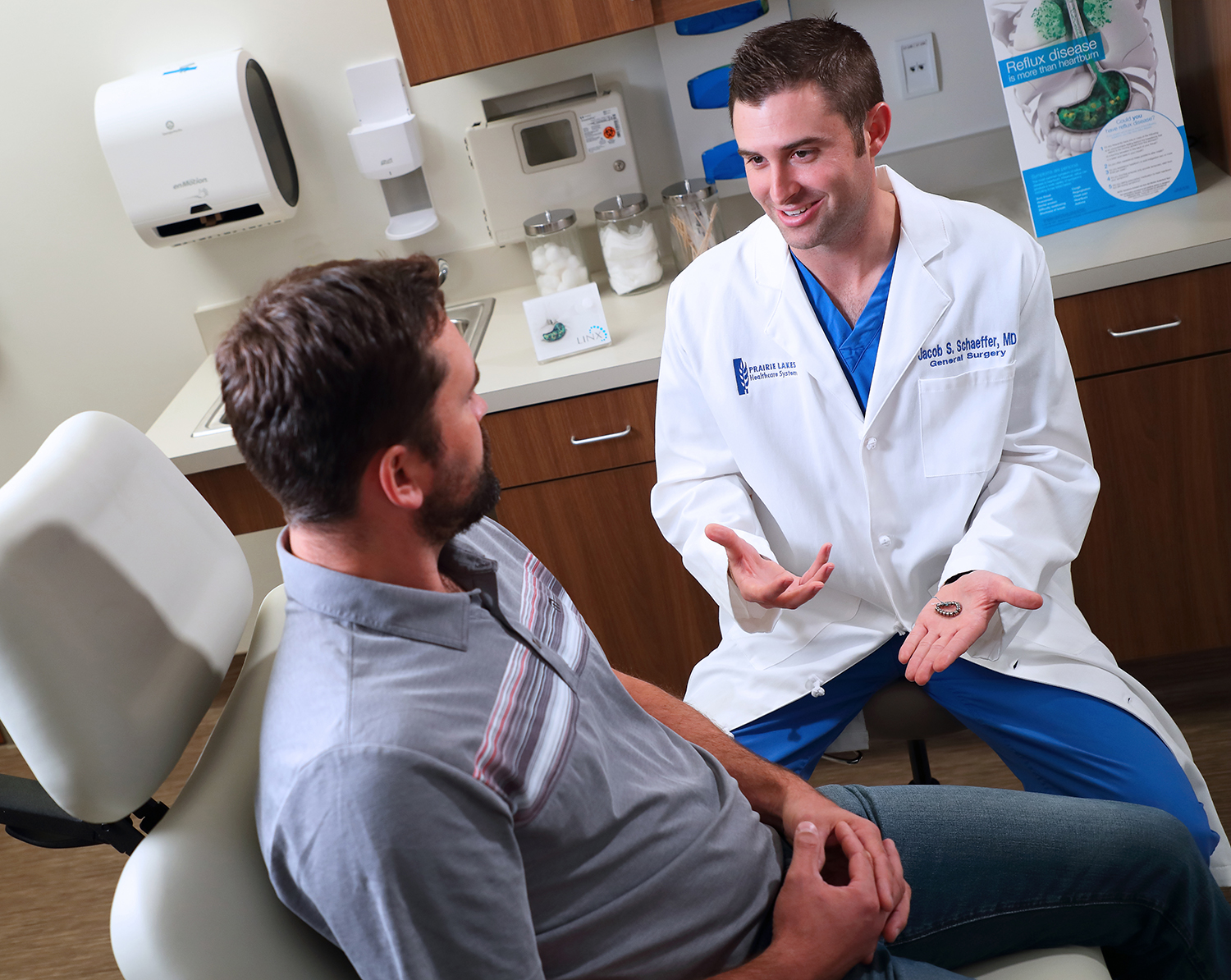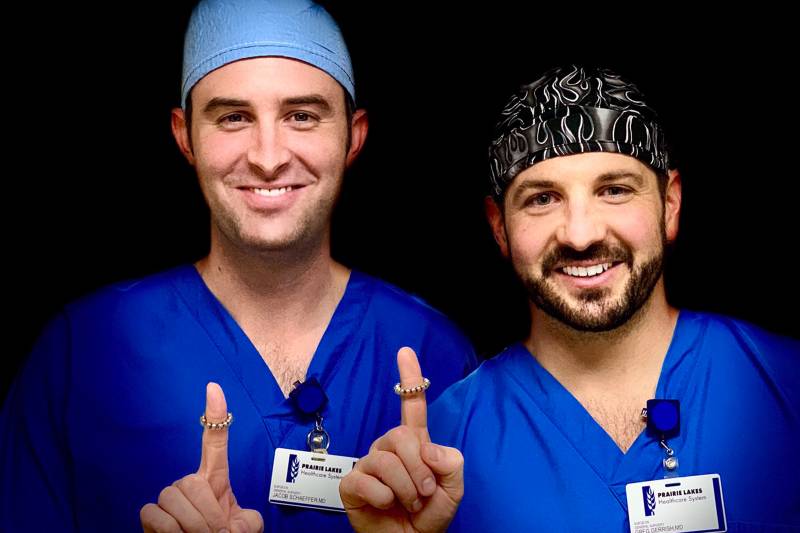Jack Hughes
Wednesday, October 16, 2019
Earwax (Cerumen Impaction)
Earache, or pain in the ear, is common and can occur in both children and adults. Earaches can be due to a problem with the ear or structures close to the ear. The pain may be dull, sharp, or burning and can occur in one or both ears. It may be constant or come and go.
Published in
ENT Health Resource Library
Tagged under
Wednesday, October 16, 2019
Dysphagia
Dysphagia means that you can’t swallow well. Dysphagia is not a diagnosis; it is the symptom. Many factors may cause dysphagia, and most are temporary and non-life-threatening. In uncommon situations, swallowing difficulties can be related to a tumor or a nerve system disorder. It happens to people of all ages, but more often in the elderly. If swallowing is difficult on a regular basis, you should see an ENT (ear, nose, and throat) specialist, or otolaryngologist.
Published in
ENT Health Resource Library
Tagged under
Wednesday, October 16, 2019
Deviated Septum
The bone and cartilage that divides the inside of the nose in half is called the nasal septum. The bone and cartilage are covered by a special skin called a mucous membrane that has many blood vessels in it. Ideally, the left and right nasal passageways are equal in size. However, it is estimated that as many as 80 percent of people have a nasal septum that is off-center. This is called a deviated septum, which may or may not cause certain symptoms.
Published in
ENT Health Resource Library
Tagged under
Wednesday, October 16, 2019
Benign Paroxysmal Positional Vertigo (BPPV)
Do you get a spinning vertigo or dizziness sensation in certain head positions? For example, turning to a particular side when you’re lying in bed, or lying flat on your back without any pillows to support you, or tilting your head back to look up, or tilting your head down as if to tie your shoes? Is it severe, feeling like it lasts several minutes when it probably only lasts a few seconds?
Published in
ENT Health Resource Library
Tagged under
Thursday, August 08, 2019
Oro, Joseph MD
Published in
Find a Doctor
Tagged under
Thursday, August 01, 2019
Haque, Farah MD
Published in
Find a Doctor
Tagged under
Monday, July 15, 2019
Mike Luken
Published in
Board of Directors
Tagged under
Monday, December 31, 2018
Reflux Treatment
During a consultation with Dr. Gerrish or Dr. Schaeffer you can discuss your symptoms and next steps to manage your acid reflux. Next steps could include diagnostic testing to find the best, personalized treatment option. Treatments include nonsurgical options like acid-reducing medicines, diet, and lifestyle changes and surgical solutions, including the innovative LINX system.
LINX Reflux Management System
The LINX® System is a treatment option for patients with chronic acid or GERD. It is a small, flexible ring of magnetic, titanium beads placed around a patient’s existing weak esophageal sphincter. The beads pull together to inhibit reflux by helping to close the esophageal sphincter and restore the body’s natural reflux barrier. For eating, swallowing, belching, or vomiting, the beads expand and separate to allow passage.
LINX is placed around the lower esophageal sphincter (LES) during a minimally invasive procedure. During the procedure, patients are placed under general anesthesia and LINX is placed. The entire procedure typically takes less than an hour and patients are discharged either the same or next day and can resume a normal diet.
Published in
Acid Reflux Center
Tagged under
Monday, December 31, 2018
Rethink Reflux Relief
You’ve exhausted over-the-counter remedies.
You’re running out of things to eliminate from your diet.
You don’t know what else to do, but you’re tired of treating the symptoms.
You just want your reflux gone.
When should I see a doctor?
Heartburn symptoms are very common in the U.S. and many may feel like taking antacids daily is simply a part of life. If you suffer from chronic heartburn or similar symptoms, you may have gastroesophageal reflux disease (GERD), more commonly known as acid reflux. GERD happens when food and liquid from the stomach moves back up into the esophagus, causing irritation.
 Reflux Symptoms:
Reflux Symptoms:
- Heartburn or burning in the chest
- Regurgitation (food coming back up)
- Long term, daily use of antacids
- Chest pain
- Nausea after eating
- Sour taste in mouth
- Coughing, choking, or wheezing
- Difficulty swallowing
- Hiccups
- Belching or burping excessively
- Hoarseness or change in voice
- Sore throat
- Feeling that food is stuck behind the breastbone
If you want to take control of your symptoms, consultations with acid reflux specialists Dr. Greg Gerrish and Dr. Jacob Schaeffer are available. During your appointment, you can discuss your options, including diagnostic testing to better manage your treatment.

 Schedule a personalized consultation with Dr. Gerrish or Dr. Schaeffer by calling the General Surgery Clinic at the Prairie Lakes Specialty Clinic: 605-882-6864.
Schedule a personalized consultation with Dr. Gerrish or Dr. Schaeffer by calling the General Surgery Clinic at the Prairie Lakes Specialty Clinic: 605-882-6864.
Learn more:
Diagnostic Services Reflux Treatment
Published in
Acid Reflux Center
Tagged under
Thursday, December 27, 2018
Price Transparency
The price list available by download below has information that includes the de-identified minimum and maximum negotiated charges along with the standard charge, the cash discount, and the negotiated charge for major payors. A payor is a company, like an insurance company or Medicare, that pays for an administered medical service. The amounts provided by each specific payor are derived from historical claims data and reflect averages. This averaging methodology can provide a base line for cost estimates. Just as no two patients are alike, no two services will be the same.
Given the many services provided by hospitals 24 hours a day, seven days a week, the price list contains thousands of services and related charges.
Standard charges are the same for all patients across all insurers and health plans, but the amount a patient is responsible to pay varies as it is dependent on payment plans negotiated with individual health insurers.
Uninsured or underinsured patients should consult with our patient representatives to determine whether they qualify for discounts; read more about financial assistance. These prices are correct as of July 1, 2024. Charges may vary from the hospital price list, due to a variety of reasons including, but not limited to, medical complications.
PLHS Charge Master (Machine Readable)
This price list in CSV format is posted in compliance with federal regulations that require hospitals to provide clear, accessible pricing information online about the services they provide beginning July 1, 2024.
Published in
Billing and Insurance
Tagged under
We See You living your life
And we're here for you with the latest technology and medical expertise you need to live your best life possible.
Orthopedics
Glacial Lakes Orthopedics is now Prairie Lakes Orthopedics.
Join Our Team
Over 600 staff members and 200 volunteers make our regional healthcare system one of the top rural health systems.
Available Services
Prairie Lakes Healthcare System offers a wide range of medical services for people who call northeastern South Dakota and western Minnesota home.
Surgical Services
Our team is here for urgent procedures like appendix removal and scheduled surgeries like joint replacement.
Dermatology
Feel good about your skin’s health. Our specialists offer individualized treatment plans and cosmetic options.
We can help you find a doctor. Call 605-882-7000 or search online.









